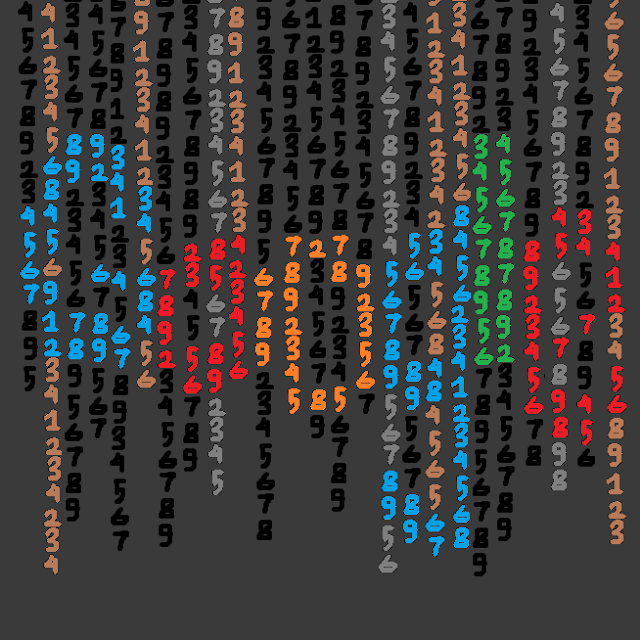The Art of Music Transcribing - Unlocking the Secrets of Sound - Blog No. 31
Imagine sitting in a dimly lit jazz club, soaking in the soulful sounds of a saxophonist improvising a melody so mesmerizing it feels almost otherworldly. You wish you could capture every note, every nuance, and make it yours. That’s where the art of music transcribing comes into play.
Music transcribing is the process of listening to music and writing it down in notation or tablature. Whether you're a musician looking to decode a complex guitar solo or a composer eager to study the intricacies of a classical piece, transcribing music is a powerful skill that unlocks new levels of understanding and creativity.
Related
The Evolution of Digital Audio Workstations (DAW) - Transforming Sound Creation - Blog No. 32
The Art of Music Mixing - Crafting Sonic Perfection - Blog No. 33
Why Music Transcribing Matters
Before the digital era, musicians relied heavily on their ears to learn songs. Legends like Charlie Parker, Jimi Hendrix, and Beethoven refined their skills through active listening and transcription. While modern musicians have access to sheet music and digital tools, transcription remains a crucial exercise for ear training, improvisation, and musical development.
Benefits of Music Transcribing
Ear Training – Transcribing sharpens your listening skills, allowing you to recognize melodies, chords, and rhythms more accurately.
Improvisation Mastery – Jazz and blues musicians often transcribe solos to understand phrasing and licks they can incorporate into their own playing.
Composition and Arrangement – Analyzing transcriptions of great compositions can provide deep insights into songwriting and orchestration.
Technical Growth – Learning to play a piece by ear enhances muscle memory, finger placement, and overall performance skills.
How to Start Transcribing Music
If you’re new to transcribing, the process can seem daunting. However, with patience and the right approach, you’ll quickly develop a keen ear for music.
1. Choose Your First Song Wisely
Start with a simple melody. Nursery rhymes, folk songs, or basic pop melodies are great choices. As you progress, you can tackle more complex genres like jazz, rock, or classical.
2. Use the Right Tools
Digital Slow-Down Software – Apps like Transcribe!, Amazing Slow Downer, or Audacity help slow down music without changing pitch.
Instrument or MIDI Keyboard – A keyboard or instrument can help you match notes more efficiently.
Notation Software – Programs like Finale, Sibelius, or MuseScore make writing easier.
3. Start with the Melody
The melody is often the most distinct part of a song. Begin by listening repeatedly and humming along to internalize the tune. Once comfortable, match each note on your instrument and notate it.
4. Identify the Chords
After the melody, focus on the harmonic structure. Listen for bass notes first, as they usually define the chord’s root. Then, try to determine the full chord quality (major, minor, diminished, etc.).
5. Transcribe the Rhythm
Rhythm is as important as melody and harmony. Clap or tap along to understand the timing. Break down complex rhythms into smaller, manageable sections.
6. Double-Check Your Work
Compare your transcription with existing sheet music (if available) or play it back to ensure accuracy. Over time, your ability to transcribe accurately will improve.
Overcoming Common Transcription Challenges
1. Fast Tempos and Complex Passages
Slowing down the track and looping difficult sections will help. You can also isolate one instrument at a time.
2. Unfamiliar Chords
If you struggle with chord recognition, try singing the bass notes and using a piano to test possible harmonies.
3. Polyphonic Music
For pieces with multiple layers (like orchestral music), transcribe one instrument or voice at a time before combining them.
Advanced Techniques for Seasoned Transcribers
If you’ve already mastered basic transcription, challenge yourself with these advanced techniques:
Transcribe Orchestral or Ensemble Pieces – Pick out multiple instruments and their interactions.
Create Your Own Arrangements – Transcribe a song and adapt it for a different instrument or ensemble.
Develop Relative Pitch – Train yourself to recognize intervals and chord progressions without an instrument.
Experiment with Different Genres – Transcribing jazz, classical, metal, and world music will expand your musical vocabulary.
The Role of AI and Technology in Music Transcription
With advancements in AI, programs like AnthemScore, Sonic Visualizer, and Melodics can generate sheet music from audio recordings. While these tools provide a helpful starting point, human transcription remains superior in capturing nuances such as dynamics, articulations, and expressive phrasing.
Conclusion: The Journey of a Music Transcriber
Transcribing music is more than just a technical skill; it’s a gateway to deeper musical understanding. It sharpens your ear, enhances your improvisational skills, and allows you to interact with music in a profoundly personal way.
Every great musician, from classical maestros to modern-day producers, has benefited from transcription. So, whether you’re trying to decode a legendary jazz solo, arrange a song for a different instrument, or simply train your ear, transcribing is a skill worth cultivating.
So grab your headphones, pick a song, and start transcribing—you never know what musical secrets you’ll uncover!



Comments
Post a Comment